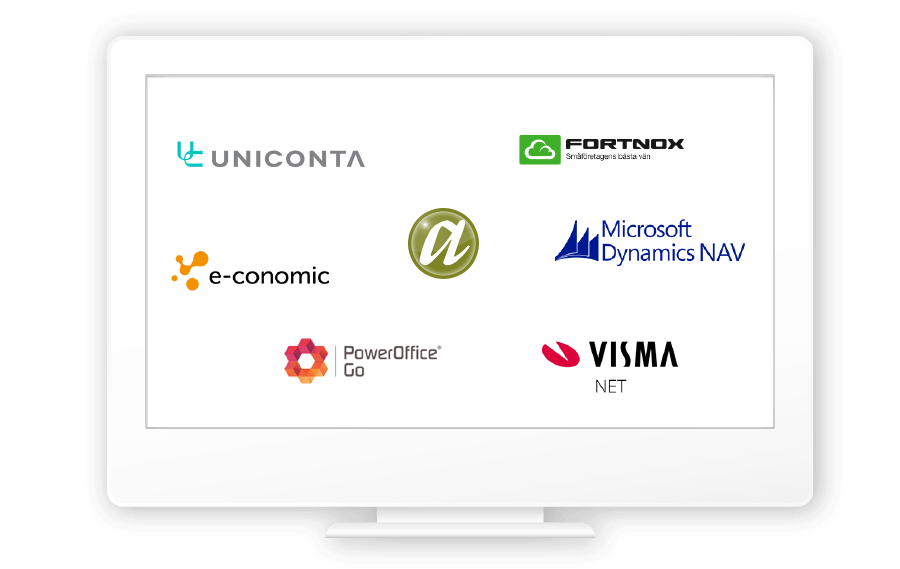CRM and ERP: The ultimate system combination

Enterprise Resource Planning (ERP), is one of the most well-known and widely used systems in the business world. The fundamental essence of an ERP system lies in its role as a tool for resource planning, serving as administrative support capable of gathering data from various parts of a business. CRM systems, on the other hand, are designed and centred around the perspective of the customer. Many of our customers question if they need a CRM system when they already have an ERP system that they’re using. We look at it differently; an ERP system and a CRM system are not opposed to each other but instead work in cohesion, forming a unity that aids businesses in enhancing their customer relations and facilitating growth. Let’s dig into how CRM and ERP can work in combination to fill in each other’s gaps and how integrating them contributes to increasing value from each system.
Do you want to know more what a CRM system can do for your ERP?
What is ERP?
Enterprise Resource Planning (ERP) is a type of software system that integrates and manages a range of core business processes, such as finance, human resources, supply chain, manufacturing, and more, into a single unified platform. It allows organisations to streamline operations, improve efficiency, and make data-driven decisions by providing a centralised database and tools for various departments to work together seamlessly.
Understanding ERP becomes easier when considering that, in ‘system language,’ ERP and CRM belong to two distinct system categories: back-office and front-office. ERP is categorised as a back-office system. This means that its functions and administration are usually not customer-related. The system is designed for managing production lines, staff resources, warehouse management, and purchases, among other activities. A front-office system, on the other hand, manages other business aspects, including the registration and management of customer interactions, such as sales, support cases, and contact information. Nowadays these systems aren’t always closely aligned because the flow and functionality of the systems are necessary throughout the entire chain.
What is CRM?
Customer Relationship Management (CRM) is a more recent innovation compared to ERP, some of the earliest CRM systems began development in the late 1980s to 1990s. As described earlier, a CRM system functions as a front-office system used to document various customer interactions with the aim of enhancing customer loyalty and manage relationships in a better way. CRM is built on the philosophy that a satisfied customer tend to remain loyal to a company and may attract new customers by spreading positive feedback about the company and its services. By organising customer data, a CRM system enables personalised communication, activities, and offers, making it a crucial component in many organisations mix of systems.
ERP and CRM together
Specialised flows
Caring about your customer relations has been shown to be a significant factor in achieving business success. While an ERP system may sometimes provide basic customer management, integrating an ERP with a comprehensive CRM system offers significant benefits. This integration enables companies to meet the complex business demands of modern business more effectively.
Current trends are leaning towards specialised integrations, meaning that modular solutions are more likely not to be chosen as the solution. Instead, the focus is now on creating streamlined flows and having a seamless transition between different functions. In other words, it’s less important to have a sophisticated order system and more important to have an order booking solution that fits seamlessly with your other systems, so you can take your business to the next level.
Avoid bottlenecks and duplicated data
An advantage of integrating CRM and ERP systems with each other, is that data and administration within your organisation becomes decentralised. An example of this is when your sales team, working in front-office, use your CRM system. With the right form of integration, the data is passed up the chain and updates the ERP system, so other departments (for example the finance department), can continue the back-office task of processing the data. In the same way, the flow goes both ways. Having a smart connection between your CRM and ERP can provide your customer support with, for example, invoicing history and status data right at their fingertips as they’re talking with the customer.
By integrating your CRM and ERP, information between departments can be shared to avoid bottlenecks and gaps in the flow. You also avoid duplicated data caused by inadequately synced systems, something that quickly causes loss of control.
A system you can grow with
It might seem like overkill to invest in a full-scale ERP and CRM system. Maybe you’re wondering if investing in several systems is really a smart way to distribute your resources. But it almost always is!
Full-scale systems are not as complicated as they seem, instead they’re usually more flexible than other systems. It means that you only need to use the functions you currently need, but still have the possibility to add functions in the future as your company grows. Having custom integrations based on your patricular data flows is an important part of getting the best value from your software investments. It creates a sustainable and effective way of working that suits the size of your company and the amount of data you deal with.

Do you want to use your current ERP system with Lime CRM?
Do you want a better ERP solution?
There’s no time to waste! Let’s find the solution that will help you get more customers and turn existing ones into loyal ambassadors today.